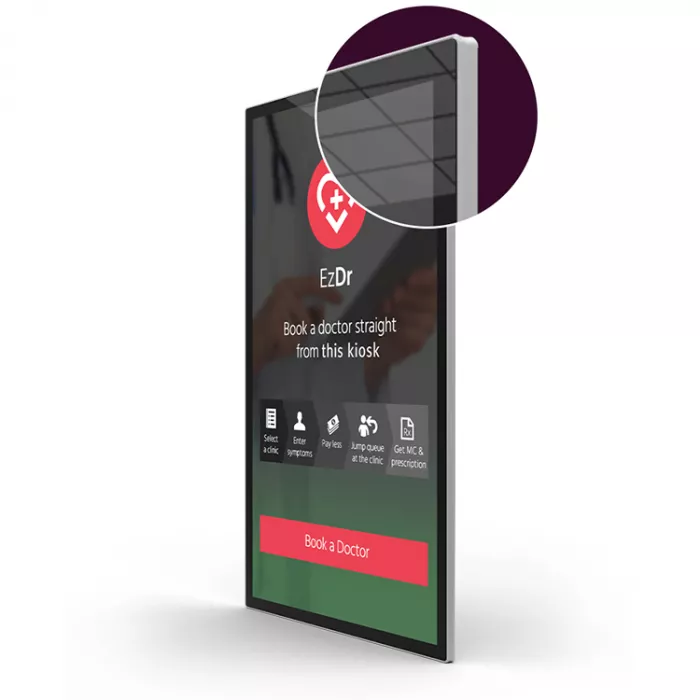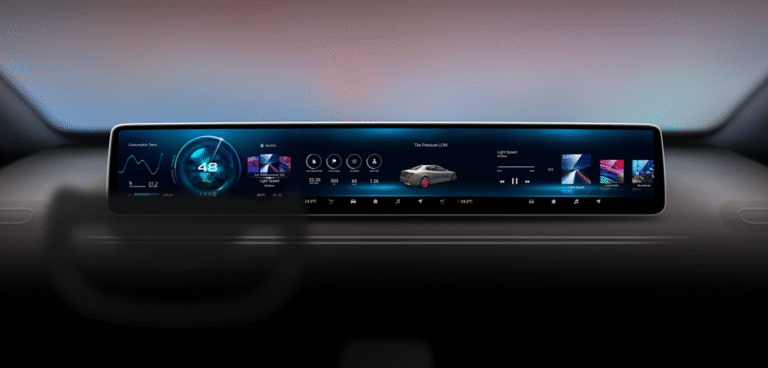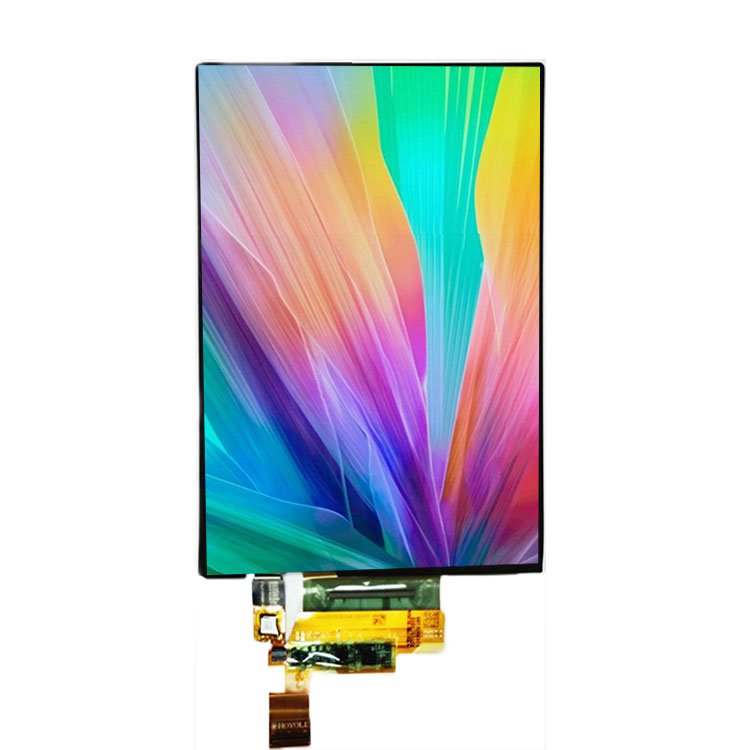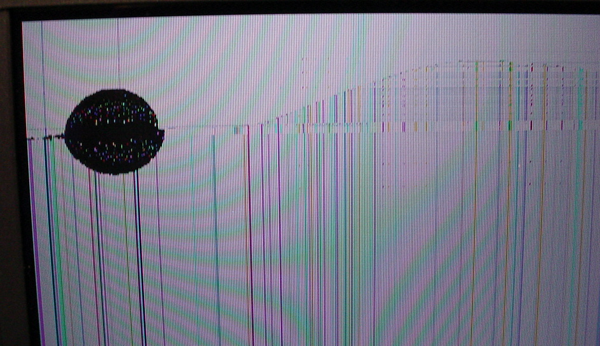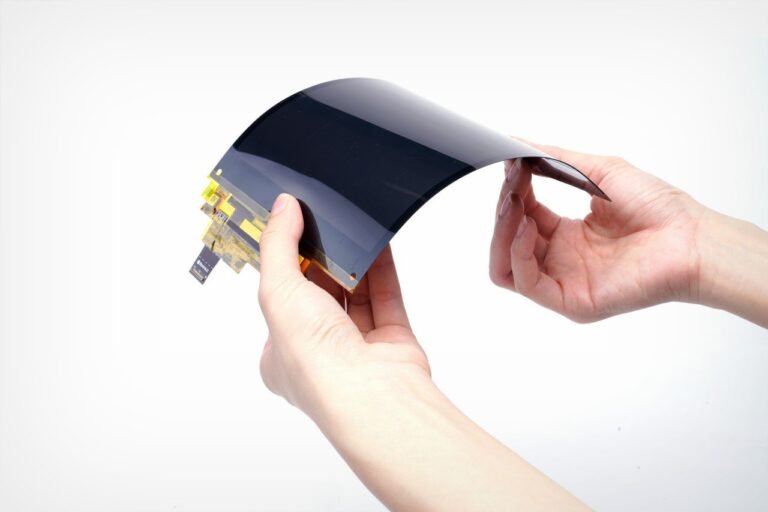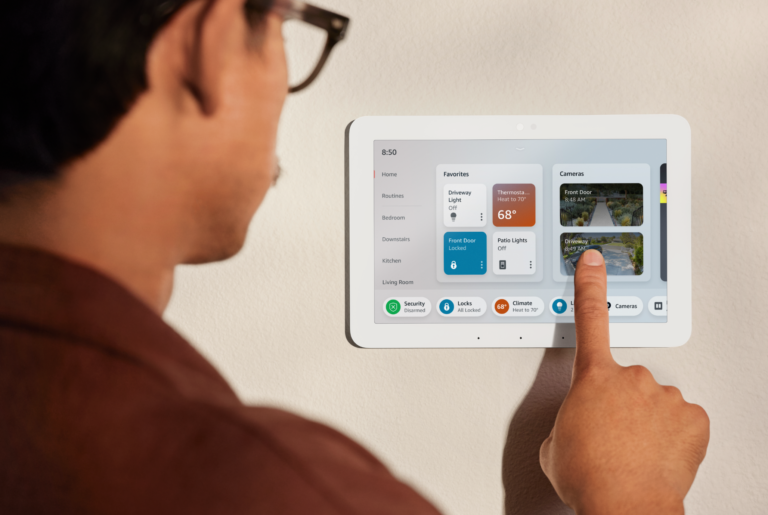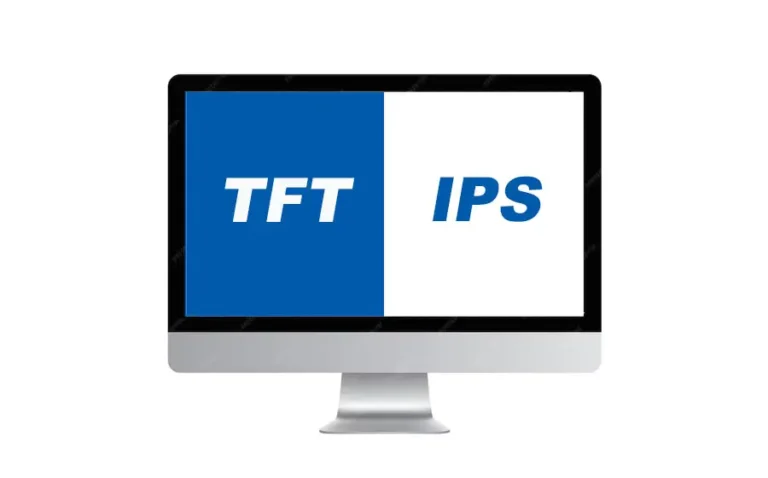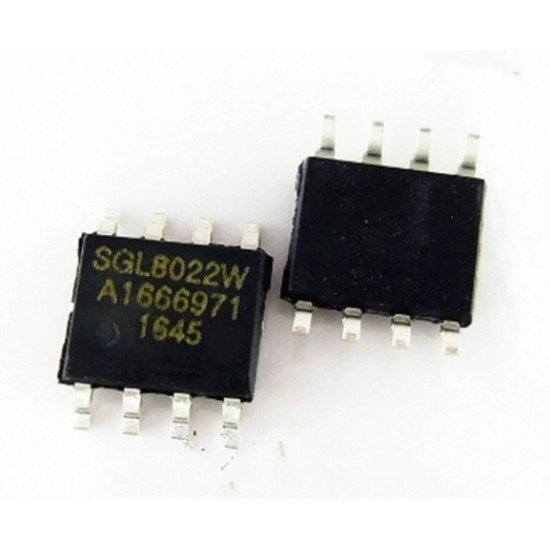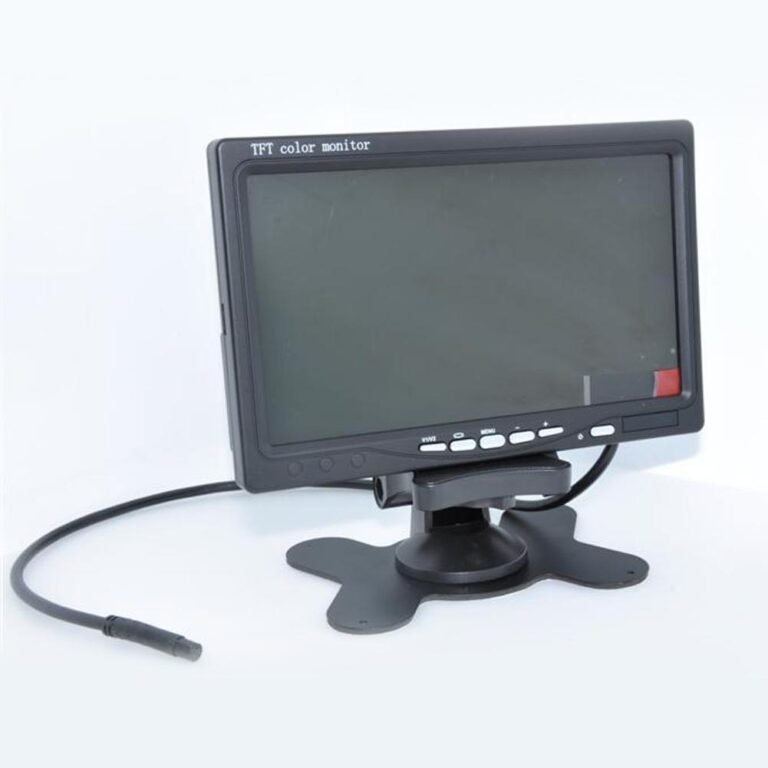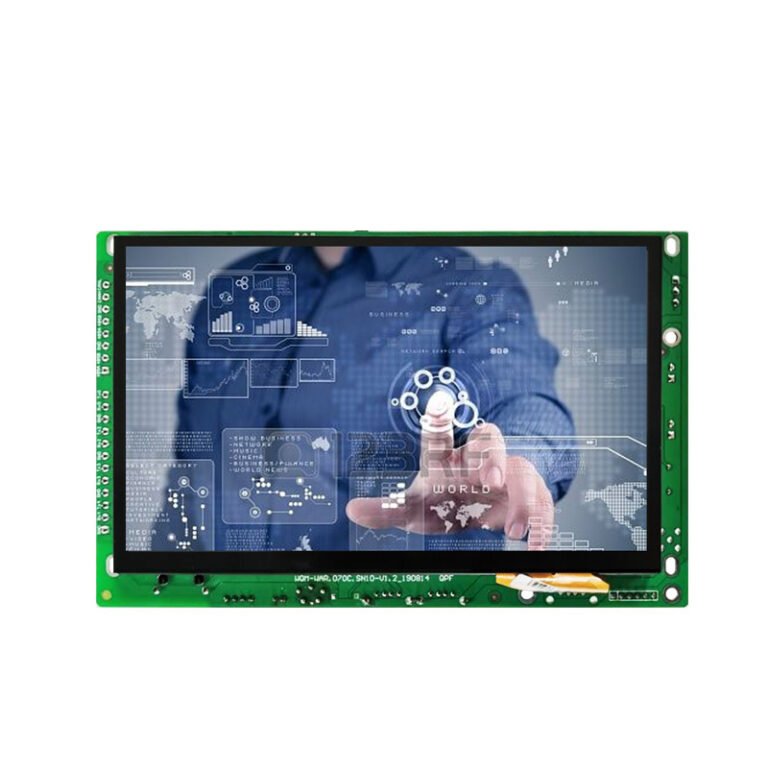Cos'è un touch screen PCAP?
A Touch screen PCAP è un display che rileva l'input tattile utilizzando la tecnologia capacitiva proiettata. La tecnologia prevede l'integrazione di una griglia trasparente di materiale conduttivo (comunemente ossido di indio-stagno, ITO) nella superficie del vetro.
Quando un dito - o un oggetto conduttivo come uno stilo - si avvicina alla superficie, disturba il campo elettrostatico, consentendo al sistema di calcolare la posizione esatta del tocco. A differenza delle tecnologie più datate, il PCAP può:
- Rilevare gesti multi-touch gesti multi-touch come pinch, zoom o rotazione.
- Funzionare con sovrastrutture in vetro sottile o plastica, risultando altamente resistente.
- Fornire tempi di risposta rapidi per un'esperienza utente senza interruzioni.
Come funziona la tecnologia touch PCAP?
Il principio di funzionamento dei touch screen PCAP può essere scomposto in diverse fasi:
- Creazione della Griglia Conduttiva – Un materiale conduttivo trasparente forma righe e colonne di elettrodi.
- Proiezione del Campo Elettrostatico – Un campo elettrostatico costante viene proiettato attraverso la superficie del vetro.
- Rilevamento del Tocco – Quando un dito si avvicina, provoca una variazione di capacità in quel punto specifico.
- Elaborazione del Segnale – La scheda controller interpreta questa variazione e la traduce in coordinate precise.
- Integrazione Software – Il sistema operativo elabora queste coordinate in interazioni utente come tocchi, scorrimenti e gesti.
Questo processo avviene in millisecondi, offrendo agli utenti un' esperienza tattile naturale, intuitiva e reattiva.
Vantaggi principali della tecnologia touch screen PCAP
La popolarità dei touch screen PCAP è guidata dalla loro capacità di superare le tecnologie più vecchie. I principali vantaggi includono:
- Capacità Multi-Touch – Supporta fino a 10 o più punti di contatto, consentendo un controllo gestuale avanzato.
- Durata – Resistente a graffi, urti e usura a lungo termine grazie alla costruzione in vetro temperato.
- Elevata Nitidezza Ottica – I materiali conduttivi trasparenti garantiscono una perdita di luce minima, offrendo visuali vivide.
- Precisione e Accuratezza – Può rilevare anche tocchi fini o input da stilo con alta risoluzione.
- Funzionamento con Acqua e Guanti – I sistemi PCAP avanzati possono funzionare con gocce d'acqua o con tocchi di guanti, ideali per uso industriale e medico.
- Design Elegante – Supporta cornici sottili e l'estetica dei dispositivi moderni.
- Lunga Durata – A differenza degli schermi resistivi, il PCAP non ha parti mobili, riducendo i tassi di guasto.
Touch Screen PCAP vs Touch Screen Resistivo
| Caratteristica | Touch Screen PCAP | Touch Screen Resistivo |
|---|---|---|
| Rilevamento del Tocco | Rilevamento capacitivo | Basato sulla pressione |
| Supporto Multi-Touch | Sì, fino a 10+ punti | No, solo tocco singolo o duale |
| Durata | Resistente ai graffi, lunga durata | Più soggetto a usura e danni |
| Nitidezza | Alta, trasparenza >90% | Inferiore, a causa dei multistrati |
| Metodo di Input | Dito, stilo conduttivo, guanto (design speciale) | Qualsiasi oggetto (dito, stilo, guanto) |
| Costo | Investimento iniziale più alto | Costo iniziale inferiore |
| Esperienza utente | Veloce, fluido, interfaccia moderna | Più lento, meno intuitivo |
Chiaramente, PCAP touch screens offer superior performance for most modern applications, though resistive touch still has a niche where cost or ruggedness is the primary concern.
Applications of PCAP Touch Screens
Elettronica di consumo
Smartphones and tablets are the most common examples of PCAP adoption. Their seamless, fluid interactions set the benchmark for all other devices.
Retail and Self-Service Kiosks
Interactive kiosks, digital signage, and vending machines rely on PCAP technology for fast, intuitive customer engagement.
Industrial HMI Systems
In factories and production environments, ruggedized PCAP screens offer operators reliable performance with glove touch functionality.
Dispositivi medici
Hospitals and clinics deploy PCAP screens in diagnostic equipment and patient monitoring systems due to their high hygiene compatibility and resistance to frequent cleaning.
Espositori per autoveicoli
Infotainment systems and dashboard controls in modern vehicles increasingly rely on PCAP displays for their sleek designs and responsive gestures.
Banking and ATMs
Modern ATMs and financial kiosks use PCAP screens to improve usability, reduce maintenance, and enhance durability compared to resistive technology.
Challenges in PCAP Touch Screen Implementation
Despite its many advantages, PCAP technology is not without limitations:
- Costo Maggiore – More expensive than resistive panels, which may limit adoption in low-cost applications.
- Environmental Sensitivity – Extreme environments (dust, water, or electromagnetic interference) can impact performance.
- Glove Compatibility – While advanced PCAP supports glove use, cheaper versions may not.
- Complex Integration – Requires precise calibration and quality controller boards to ensure performance.
Future Trends in PCAP Touch Screen Technology
The future of PCAP touch screens is promising, with innovations making the technology more versatile:
- Flexible PCAP Displays – Integration into curved or foldable surfaces.
- Integrazione di Feedback Aptico – Simulating tactile sensations for enhanced interaction.
- Edge-to-Edge Glass Designs – Ultra-slim bezels for premium aesthetics.
- AI-Enhanced Touch Recognition – Differentiating between intentional and accidental touches.
- Energy Efficiency Improvements – Reducing power consumption for longer battery life in mobile devices.
- Outdoor-Readable Displays – Better brightness and anti-glare features for public kiosks and vehicles.
Why Partner with a PCAP Touch Screen Solution Provider?
When implementing PCAP technology in industrial or commercial products, selecting the right partner is crucial. An experienced solution provider offers:
- One-Stop Service – From PCAP panels to controller boards, cables, and integrated display modules.
- Personalizzazione – Tailored solutions in size, resolution, touch sensitivity, and glass thickness.
- Certificazioni – Compliance with ISO, CE, RoHS, and other global standards.
- Scalabilità – Ability to deliver both small prototype batches and large production runs.
- After-Sales Support – Consulting, troubleshooting, and product lifecycle management.
Such partnerships ensure not only quality hardware but also system-level optimization for maximum performance.
Conclusion: The Role of PCAP in the Future of Displays
From smartphones to industrial control systems, PCAP touch screens are redefining human-machine interaction. Their multi-touch capability, durability, precision, and sleek aesthetics make them the go-to technology for industries requiring intuitive, reliable, and future-ready interfaces.
As innovations such as flexible panels, haptics, and AI-driven recognition In anticipazione, PCAP rimarrà all'avanguardia nella tecnologia di visualizzazione. Le aziende che adottano ora soluzioni PCAP saranno meglio posizionate per offrire esperienze utente moderne, ridurre i rischi di manutenzione e migliorare la competitività.
Per le imprese che cercano un partner affidabile in soluzioni di touch screen PCAP, la scelta è chiara: investire in un fornitore tecnologico che combini personalizzazione, qualità e supporto end-to-end.


